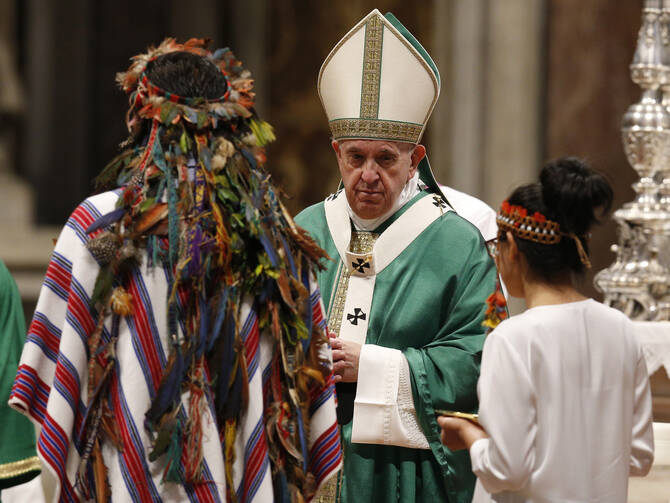The Vatican published Pope Francis’ long awaited follow-up document to the Amazon Synod, “Querida Amazonia,” or “Beloved Amazon,” this morning. This document was highly anticipated because it was expected to include Pope Francis’ final decision on whether or not to allow the ordination of mature, Indigenous, married men as priests or of women as deacons in the Amazon region.
Listen and subscribe on Spotify and Apple Podcasts.
Although the synod bishops recommended that Pope Francis approve the ordination of married men, the pope avoided the topic in his document, opting instead to encourage more vocations to the priesthood in the region. Some analysts have taken this, combined with Francis’ emphasis on the bishops’ recommendations document, to mean that the question of married priests is still open.
On the question of female deacons, Francis says no, but encourages the church to find other, creative ways to increase women’s roles in ministry.
In this brief update episode of America’s “Inside the Vatican” podcast, I explain how these decisions, along with Francis’ comments on creating an Amazonian liturgical rite, fit into his pattern of entrusting important decisions to local churches—and what challenges churches face when trying to make these decisions.
“Querida Amazonia” is about much more than these two issues. You can find more coverage of the document below, along with a full analysis next week on “Inside the Vatican.”
Links from the show:










